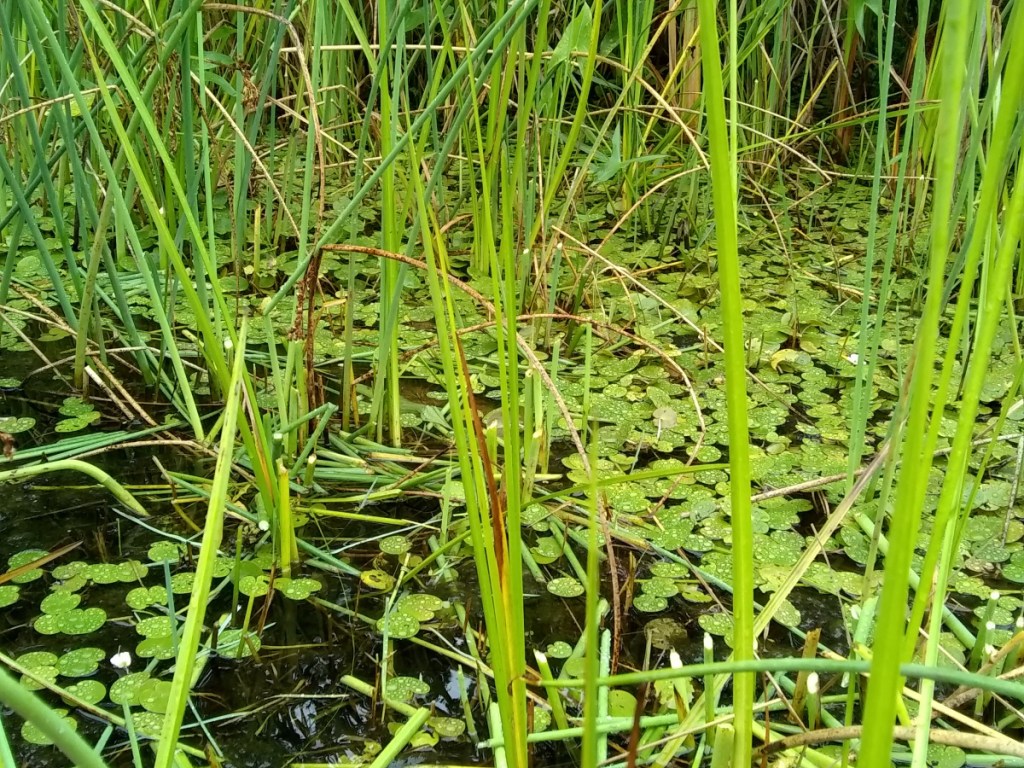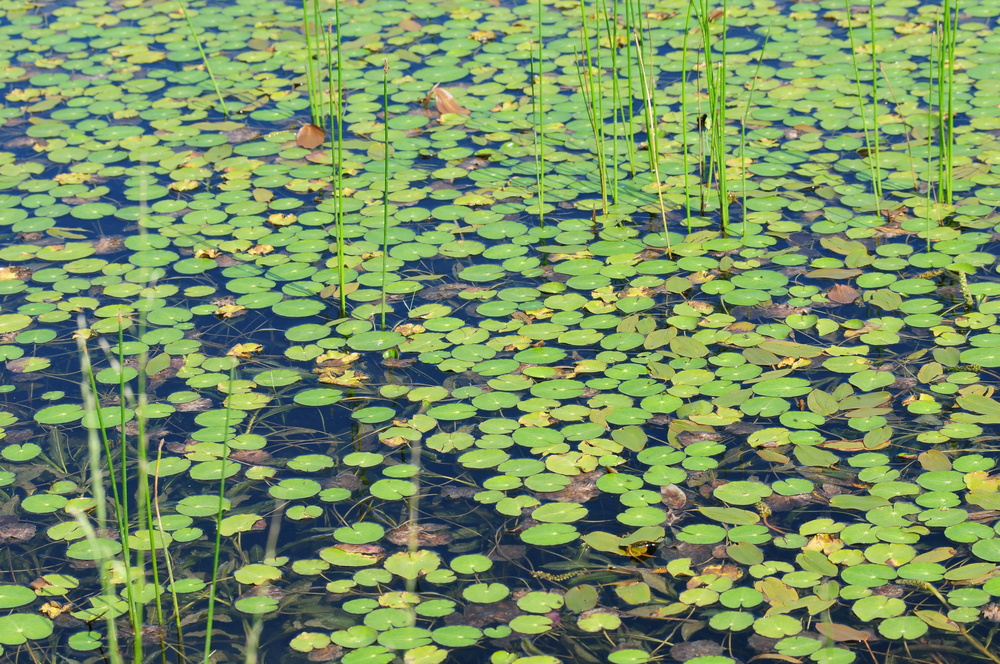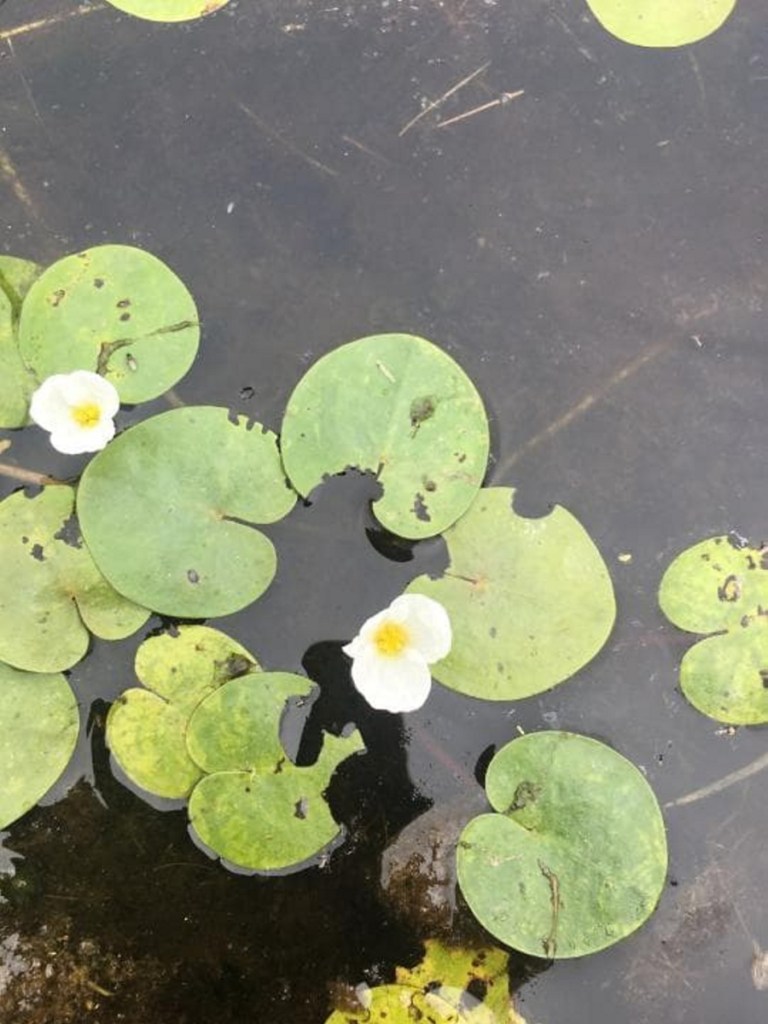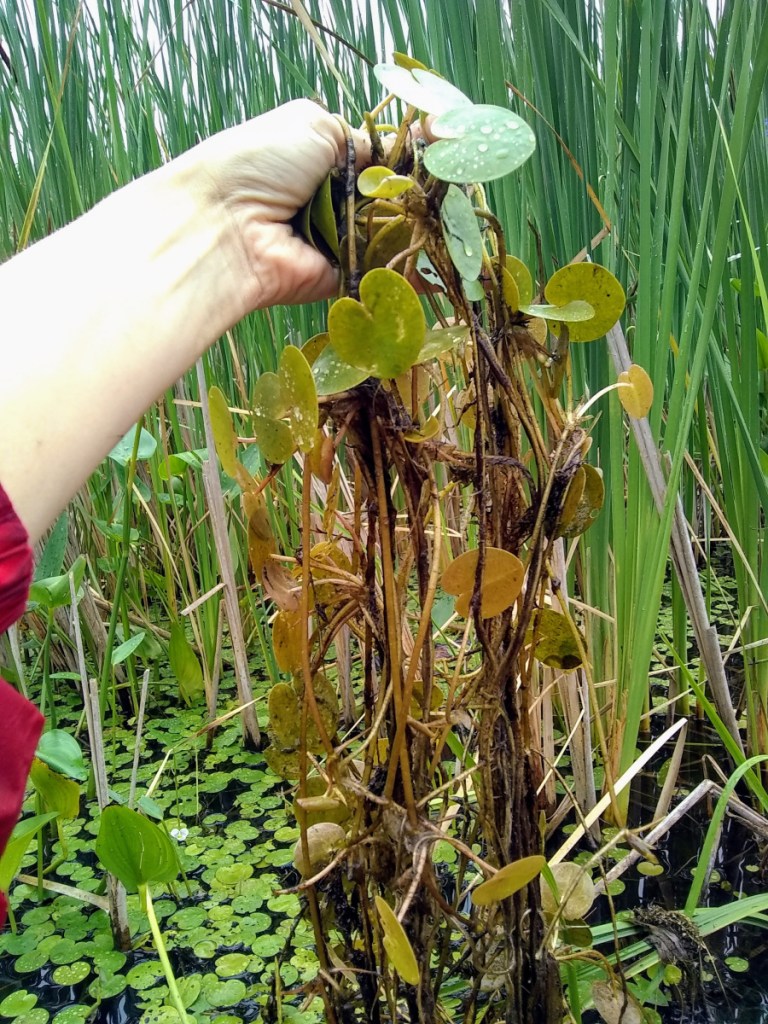State officials recently discovered European frogbit, an invasive water plant, growing in Maine for the first time.
They found the infestation just outside Augusta, in the northeast corner of Cobbossee Lake in Manchester, and announced the discovery Wednesday.
The news came just a week after the announcement that a different invasive plant, Eurasian water milfoil, was found in a nearby section of Cobbossee Lake.
While the European frogbit was discovered Aug. 10, it might have been growing in the area for several years, said John McPhedran, a biologist in the Maine Department of Environmental Protection.
The plant was found in a cove in the northeast corner of the lake, at the eastern edge of the Hammonds Grove neighborhood and just east of the Augusta Country Club beach. McPhedran didn’t know the exact size of the infestation, because surveyors still are trying to determine how far it extends up a stream that flows into the lake.
“It’s really hard to know how long it’s been there or how it got there,” McPhedran said in an interview. “It’s well established.”
Lakeside property owners, state officials, and organizations such as Friends of the Cobbossee Watershed have feared the spread of invasive species such as Eurasian water milfoil and variable-leaf water milfoil, because they can crowd out native species and harm water quality. In some cases, infestations also can reduce property values, McPhedran said.
While he still is doing research on the European frogbit, McPhedran said it might not be as hardy or aggressive as an underwater plant such as milfoil, which can take root when just a small fragment reaches a new area. European frogbit floats on the surface of water and would have a hard time forming a habitat in the windier, choppier sections of a lake, he said. Instead, it could be confined to shallower sections of a lake.
Still, the infestation could grow in dense mats, thereby doing harm.
“It has a potential to shade out native plants that would otherwise be growing there,” McPhedran said. “But the area likely to be affected is the areas of quiet water, not fast-moving areas, not areas hit by wind and waves.”
Two groups are now helping state officials to survey the area where the plant was found and remove it: the Cobbosssee Watershed District and Friends of the Cobbossee Watershed.
Over a couple hours Tuesday, they were able to remove more than 100 gallons of the plant; but those efforts “only made a small dent,” said Toni Pied, the plant survey and control director at Friends of the Cobbossee Watershed.
“We’ve all been doing research on how the plant grows, and what it’s life cycle is, to get a handle on our strategy,” she said.
In a Maine Department of Environmental Protection news release, McPhedran said he’s “confident that DEP’s collaboration with Cobbossee Watershed District and Friends of Cobbossee Watershed will result in reducing this infestation.”
He added, however, “We also need to be realistic. Real control will require continued commitment and will occur over years, not days or months.”
Cobbossee Lake is a more than 5,000-acre body of water in the towns of Litchfield, Manchester, Monmouth, West Gardiner and Winthrop. It’s also called Cobbosseecontee Lake.
European frogbit is native to Europe and northern Asia, according to the U.S. Geological Survey. It has green, heart-shaped leaves and a small white flower with three petals. It grows best in shallow, slow-moving water and coves, and floats on the surface of water.
After first being introduced intentionally in 1932 to a water garden in Canada, it was found in a New York river in 1974 and continues to expand, according to Maine DEP.
In the U.S. and Canada, it usually is grown in aquariums and water gardens, but Maine has prohibited its sale, McPhedran said. It’s been observed in at least five states besides Maine, according to a USGS map of reported sightings: Michigan, New York, Ohio, Pennsylvania and Vermont.
McPhedran has not heard reports of European frogbit reaching any other water bodies in Maine, but he said the state now will work harder to educate people who survey lakes about its appearance and how it differs from other floating water plants.
To prevent the spread of invasive plants, McPhedran urged the owners of aquariums or water gardens to throw old plants into the trash, and not into streams or lakes. He also said boaters should clean, drain and dry watercraft, trailers and equipment before and after every use.
Cobbosee Lake is among the most vulnerable of Maine lakes to an infestation by invasive species, according to a 2017 assessment by Maine DEP.
Almost half of the lake is considered a good habitat for plants, Pied said. It’s also a popular bass fishing destination that draws many visitors from out-of-state and has two public boat launches.
“It’s more vulnerable,” she said. “It needs more attention.”
But the recent discovery of European frogbit does provide an opportunity for residents who want to help protect the lake, because it isn’t submerged, unlike some invasive species that have become such a serious concern across Maine, Pied added.
“We kind of feel like this is potentially a good volunteer project,” she said. “The silver lining is it grows above water. … It’s a little easier to remove something like that than milfoil.”
Charles Eichacker — 621-5642
Twitter: @ceichacker
Copy the Story Link
Send questions/comments to the editors.







Success. Please wait for the page to reload. If the page does not reload within 5 seconds, please refresh the page.
Enter your email and password to access comments.
Hi, to comment on stories you must . This profile is in addition to your subscription and website login.
Already have a commenting profile? .
Invalid username/password.
Please check your email to confirm and complete your registration.
Only subscribers are eligible to post comments. Please subscribe or login first for digital access. Here’s why.
Use the form below to reset your password. When you've submitted your account email, we will send an email with a reset code.